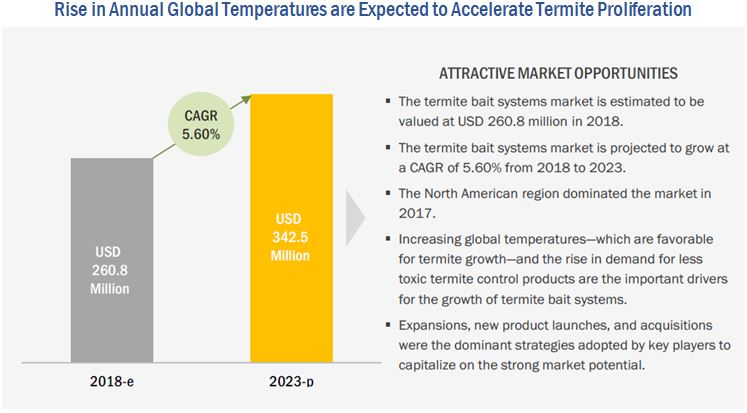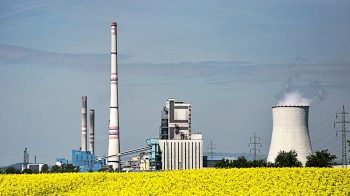
The termite bait systems market is estimated to be USD 260.8 million in 2018 and is projected to reach USD 342.5 million by 2023, growing at a CAGR of 5.60%. The growing demand for less toxic and target-specific termite control solutions is expected to boost the market for termite bait systems.
Key players in the termite bait systems market include DowDuPont (US), BASF (Germany), Bayer (Germany), Sumitomo Chemical (Japan), Syngenta (Switzerland), and Rentokil Initial (UK). Spectrum Brands (US), Ensystex (US), PCT International (Australia), Rollins (US), Terminix International (US), and Arrow Exterminators (US) are other key market players who also have a significant market presence.
To know about the assumptions considered for the study download the pdf brochure: https://www.marketsandmarkets.com/pdfdownloadNew.asp?id=211702476
Subterranean termites are the most common termites present globally and cause the most destructive damage to houses and other properties. Since subterranean termites are found below ground level, in-ground termite bait stations are used to control these termite infestations. The in-ground segment accounted for 72.5% of the global termite bait systems market in 2017, in terms of station type.
The commercial & industrial segment is projected to register the highest growth rate from 2018 to 2023. The increasing commercial and industrial construction activities, especially in the developing regions, have led to an increased demand for termite control services. The commercial & industrial sector needs to adhere to certain hygiene standards. This can create a significant demand for pest and termite control services in and around commercial and industrial areas. Additionally, the need for less-toxic termite control methods, such as termite baits, is also expected to gain importance in the coming years from the commercial & industrial segment.
The termite bait systems market, in terms of station type, is estimated to be dominated by in-ground bait stations in 2018. The main function of the in-ground station type is to monitor termite activities below the ground level of and around homes and apartments. Since subterranean termite species are predominantly found below the ground, consumers give high preference to in-ground termite bait stations. The convenience in the use of these products is a major reason supporting the acceptance of in-ground bait stations among consumers.
In this report, on the basis of application, the market has been segmented into commercial & industrial, residential, agriculture & livestock farms, and others that include forestry, storage, and transport facilities. The commercial & industrial segment is estimated to account for the largest share in 2018. This dominance can be attributed to the need to avoid heavy infrastructure losses from termite damage in the commercial & industrial sector.
Make an Inquiry: https://www.marketsandmarkets.com/Enquiry_Before_BuyingNew.asp?id=211702476
The North American region accounted for the largest share in 2017 due to the presence of players such as DowDuPont (US), BASF (Germany), and Rentokil (UK). Moreover, the presence of these companies in technologically advanced countries such as the US and Canada, and higher consumer awareness about and preference for pest control services have been key factors for the increasing adoption of bait systems for termite control. The market for termite bait systems in the Asia Pacific region is projected to grow at the highest CAGR from 2018 to 2023, owing to the increasing investments in the commercial & industrial sectors.
